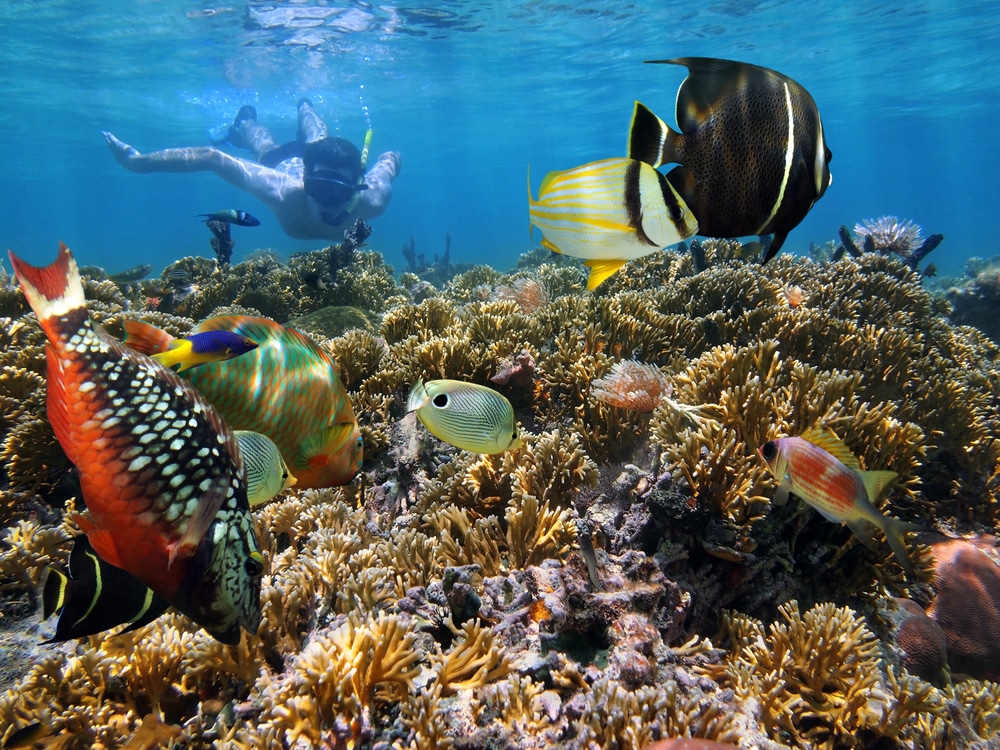Dive beneath the azure waves of Costa Rica’s Pacific coast, near the enchanted Isla del Caño, and you’ll find a compelling tale of survival and science. It’s a story where dedicated researchers work tirelessly to protect and rejuvenate coral reefs, those delicate underwater oases crucial for marine biodiversity.
In a world where climate change ruthlessly tampers with our planet’s ecosystems, coral reefs stand at the frontline. Known for their fragility, these vibrant underwater cities are temperature-sensitive powerhouses of biodiversity. But as ocean temperatures soar, corals face an existential threat – bleaching. This phenomenon, akin to a marine SOS signal, underscores the urgency of our global environmental predicament.
Costa Rica’s Efforts: A Beacon of Hope
At the heart of these conservation efforts is Isla del Caño, a biological reserve off Costa Rica’s South Pacific coast. This island, known for the most diverse coral population in the region, has become a focal point for conservation initiatives, particularly those spearheaded by the non-profit Innoceana.
Despite international efforts, like the United Nations’ 17 Sustainable Development Goals, and the specific target to conserve oceans and marine resources, comprehensive research and action to protect these ecosystems remain sparse. Enter Innoceana, a group steadfastly raising awareness about the dire state of Caño Island’s corals. They discovered an alarming 80% of local corals were lost to bleaching, caused by an extreme rise in ocean temperatures.
Since June 2023, Innoceana has been diving deep into these issues, using innovative techniques like temperature monitoring and 3D modeling to understand and combat this environmental crisis. They’re not just fighting for corals; they’re fighting for a future where these ecosystems continue to thrive.
The Super Coral Strategy
Moving beyond mere temperature tracking, Innoceana’s researchers have embraced a holistic approach. They analyze water quality, visibility, and even the very DNA of these marine wonders. In their quest, they’ve identified ‘super corals,’ resilient species capable of withstanding harsh conditions. Their laboratory in Costa Rica, equipped with cutting-edge technology, is dedicated to understanding these corals’ immune responses.
Laura Vanopdenbosch, Innoceana’s research director, emphasizes the importance of this approach. “By identifying corals with strong immune systems, we can enhance restoration efforts, ensuring lower mortality rates and higher resilience to environmental changes,” she explains.
Coral Rugosity: The New Frontier
Coral rugosity, a measure of a reef’s surface complexity, is pivotal in assessing the health and biodiversity of these habitats. Traditional methods, however, have been invasive and limited. Innoceana’s solution? Non-destructive 3D modeling, offering detailed insights into these underwater landscapes.
“Rugosity is a key indicator of a reef’s complexity and, by extension, its health,” Vanopdenbosch adds. “Our method provides us with detailed data that are crucial for understanding these ecosystems better.”
The Road Ahead
As the team at Innoceana forges ahead, their work goes beyond scientific research. They are crafting a narrative of hope, resilience, and innovation in the face of environmental adversity. Their efforts are a testament to Costa Rica’s commitment to preserving its natural heritage, a commitment that resonates globally.
In the grand scheme of things, the work being done around Isla del Caño is more than just saving corals. It’s about safeguarding our planet’s biodiversity, ensuring the survival of marine life, and ultimately, preserving the balance of our world’s ecosystems.


1 comment
[…] Source link […]